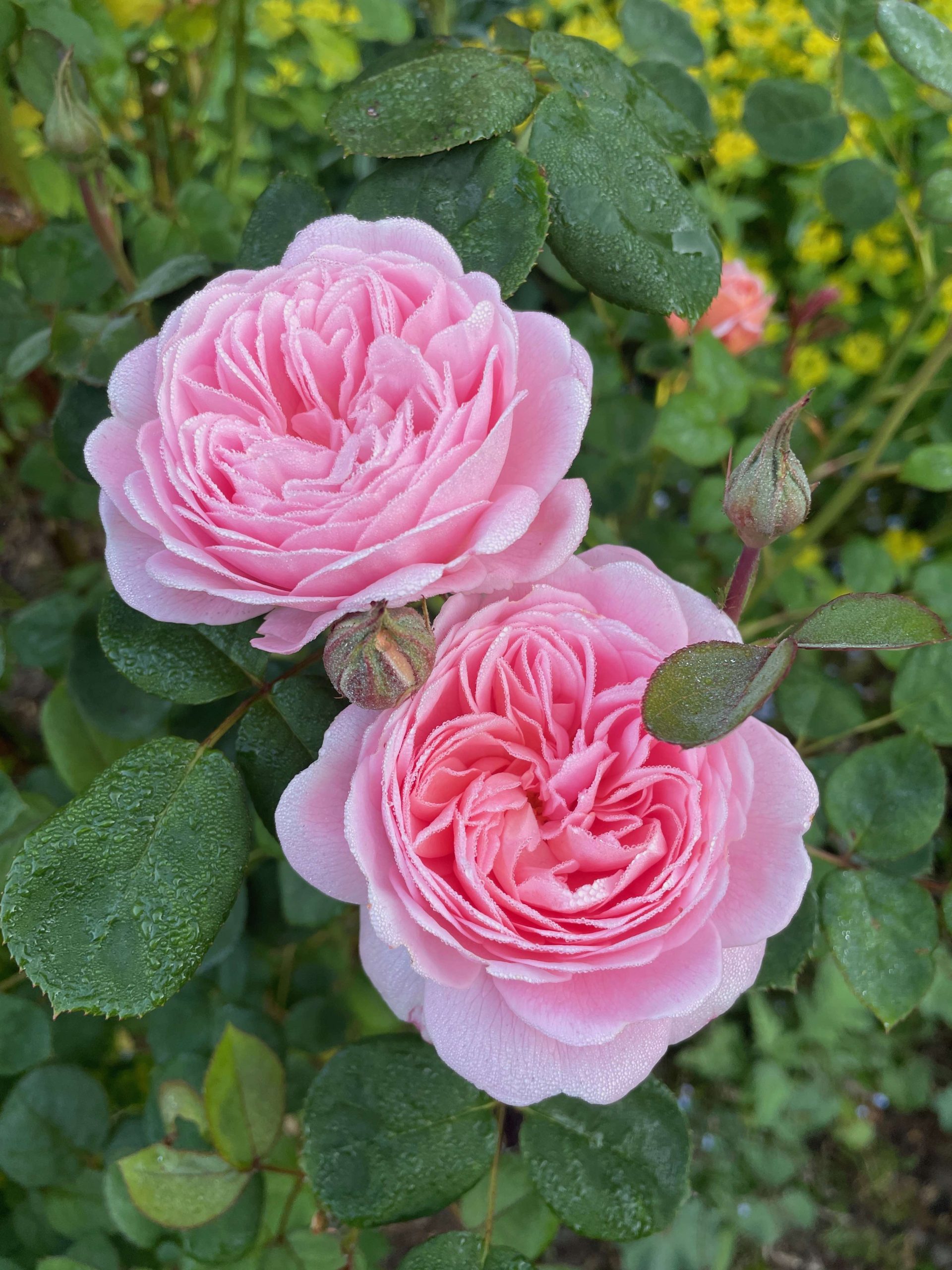Roses for the Roseland
This month our gardening expert Annie Agnew has some tips on on growing roses on the Roseland, the ‘chelsea chop’ and snail hunting at dawn.
I know the Roseland is not named after the rose – it just means upland or heathland – but we can and should grow roses here.
Cornish gardens are not known for their roses – the great Victorian gardens of Cornwall have few if any. I can think of a beautiful white species rose pruned onto the wall of the Sensory Garden as you enter Trelissick but none elsewhere in the garden. There are a few at Heligan but I’ve searched Trebah and Glendurgan to no avail. The much earlier (16th C) garden being restored at Godolphin now has roses in the King’s Garden but it seems that the 19th-century fashion for informal, arboretum style gardens dominated by camellias, rhododendrons and magnolias usurped many old favourite garden plants including roses. I believe that this bias has leaked into our domestic gardens – I see few roses when peering over garden fences – but it’s a great loss to the summer garden.
Our warm wet climate is also likely to be in part responsible because many older roses are subject to fungal infections that weaken the plant and make them look wretched. Hybrid tea roses and floribundas seem to be particularly susceptible, but the Cornish Rose Company can advise you on the best of these for our climate. Modern rose breeding has come to the rescue with many more disease-resistant varieties.
The hybrid musk roses bred in the early 1900’s by the Reverend Joseph Pemberton and his sister Florence are very tough. They make relaxed wide shrubs with clusters of smallish very scented flowers.
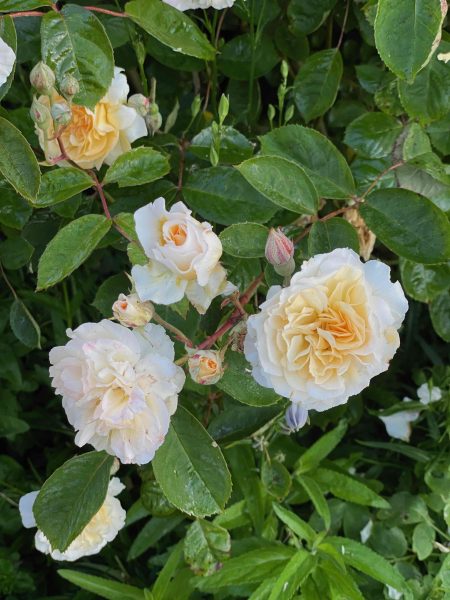
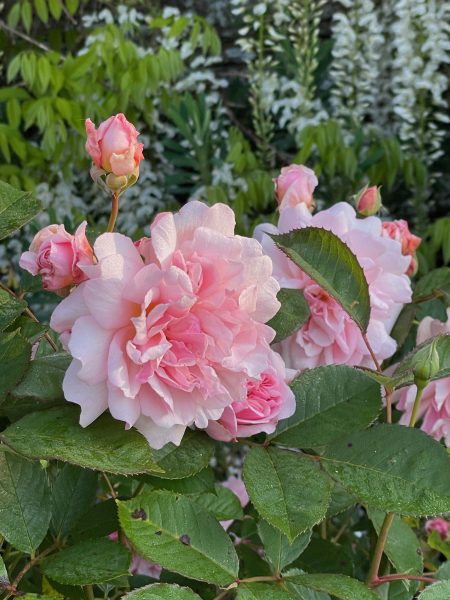
I love Buff Beauty, a soft apricot fading to cream and Felicia, a delicate silvery pink. With regular dead heading, they will flower on and off all summer.
More recently, David Austin has specialised in breeding roses that look and smell like old fashioned shrub roses but are more continuous flowering. The catalogue of these English Roses helpfully lists those that are most disease-resistant, so I recommend consulting their website when deciding what to plant.
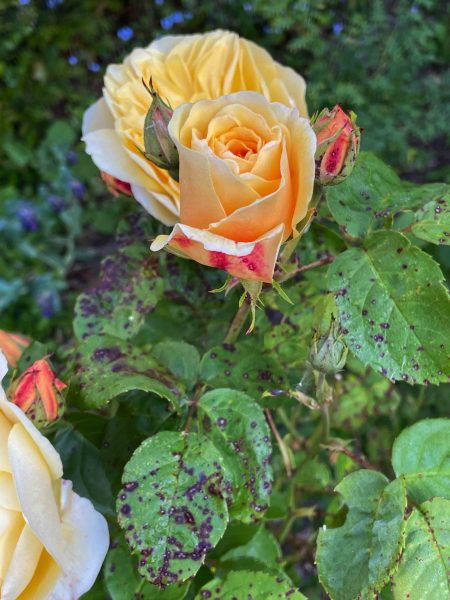
We don’t have good rose soils here on the Roseland, they are generally poor nutritionally and dry out in summer so roses do need a bit more TLC than they do elsewhere. Even on my horrible soil, I can keep my chosen 30 plus roses free of black spot and mildew most summers – but only if I feed quite heavily and don’t let them get water stressed.
The English Roses typically have large, very full-petalled flowers.
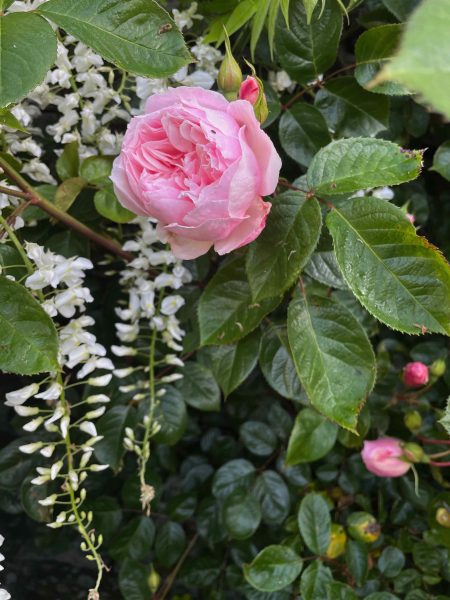
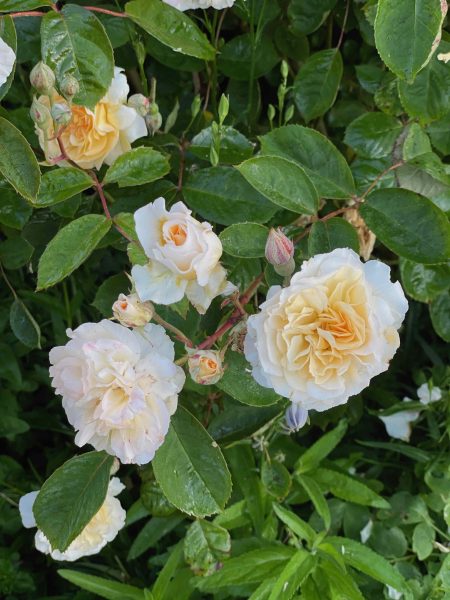
Others are smaller and more delicate. I grow The Queen of Sweden – perfect shell pink on upright stems, and Mrs Susan William Ellis, white flowered on pretty, fine greyish foliage. Both would add height but still fit into the smallest garden.
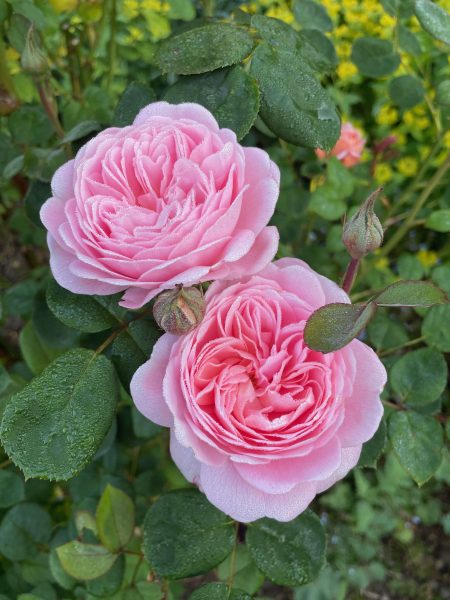
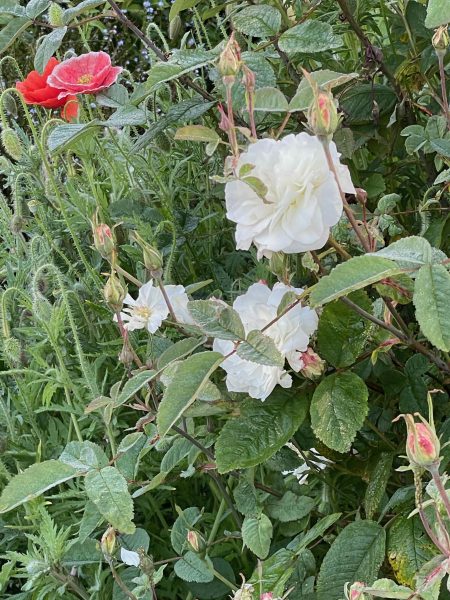
Many species roses are also very tough. The rugosa roses are not only disease-resistant but can stand up to high winds and salt – witness the Rosa rugosa thriving on the dunes at Pendower even after being almost washed out in the February 2014 storm. Rosa rugosa Alba is quite a refined beauty with pure white flowers. Roseraie de l’hay has strong magenta, double flowers that are richly scented. Both set lovely fat hips in late summer.


Other species roses that are disease-resistant as well as beautiful are Rosa moyesii Geranium – a tall single flowered rose with bright red ‘wild rose’ flowers followed by long red hips. Rosa glauca is also tall, has soft grey green foliage, pink single flowers and also has lovely hips in Autumn. Both these would fit into an informal planting at the edge of woodland or in the back row of a mixed border.
Rosa chinensis offspring are also suited to our climate. My favourite is the Butterfly Rose – Rosa Mutabilis.
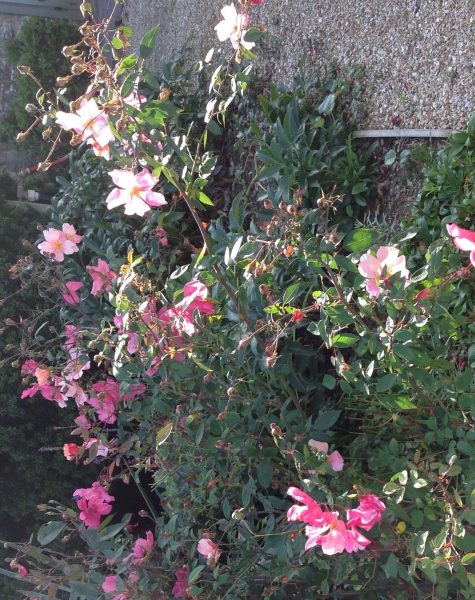
It has dark stems and buds, is lightly leaved and flowers from June to December. The flowers open a rich cream and transition through peach to deep cerise as they age. They are held high on the bush so they seem like butterflies alighting on the top. It is a difficult rose to place with other colours – I plant green-flowered tulips followed by Echinacea Green Wizard under its feet. Peter Beales is an excellent grower of species and old roses.
Choose carefully and roses will give you joy even in difficult growing conditions.
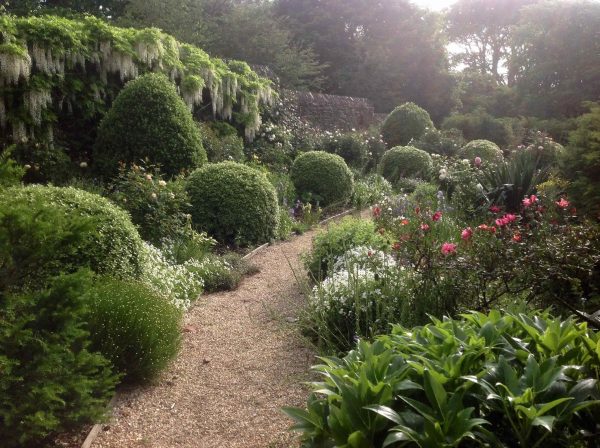
The Chelsea Chop
I’m sure most gardeners know about cutting back tall perennials at this time to keep them from flopping over later in the summer but it’s easy to forget to do it. Chelsea is over but, if you forget, you can keep chopping back all through June – indeed I sometimes find I’m doing a Hampton Court chop. I cut down to 30 cm – just the front edge of large stands of perennials like Helianthus, Helenium, and Asters so that the shorter bushy-growing front holds up the back and extends the flowering as well. I also pinch out the tops of the larger Sedums (now Hylotelephium) around the edge of each clump – it stops them falling outwards leaving a bare centre.
Snail hunting at dawn.
The dahlias, delphiniums and many other juicy young shoots are coming up at this time of the year and suffer from slug and snail damage and even total annihilation. Your newly planted out Cosmos can be reduced to a stalk overnight!
I am unhappy about using slug pellets – even the ferric phosphate allowed for organic gardeners – so I go hunting. The best time is about 6 am, a lovely time to be out anyway but the satisfaction of filling a bucket with snails cannot be underestimated! All night they’ve been out munching all over the garden but in the morning the critters are all heading home to sleep in the shade. So it’s easy to find them climbing into long leaved plants like Watsonias and Day Lilies or evergreen shrubs like box and Pittisporum. I won’t reveal what happens next ….

